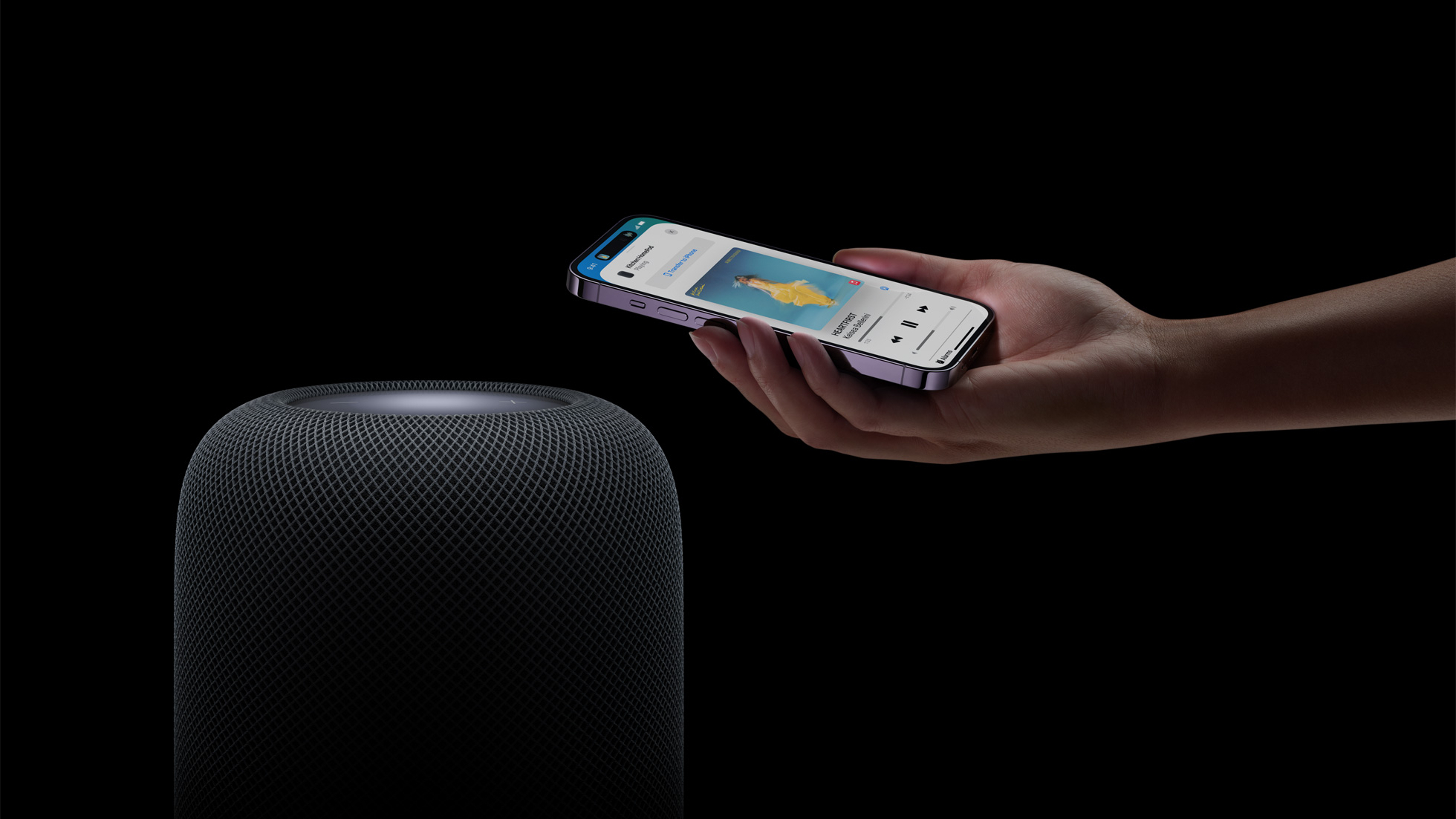The HomePod 2's great, but I want one more thing from Apple
Apple should let the HomePod 2 play with its siblings

OPINION: Apple’s soon-to-launch HomePod 2 is undoubtedly an impressive smart speaker.
In fact, having caught up with What Hi-Fi’s all-star team of audio testers and read our HomePod 2 review, I can confirm an entry into our best smart speaker guide is on my to-do list this week.
And there are plenty of reasons for this. For starters, there’s the fact Apple takes audio very seriously. We got a detailed breakdown of how seriously in 2022 when our aforementioned audio editor caught up with Esge Andersen, an engineer from Apple’s acoustics team, to discuss the AirPods Pro 2.
Specifically, he detailed how the firm uses a broad body of “expert listeners” to help tune the sound and make sure it covers a variety of tastes, not just the main designer’s. This is a similar approach to how we review audio, where every product needs to have multiple experts listen to it in our test rooms before we’d even consider putting pen to paper. This is why we had three sets of ears testing the HomePod 2.
The Sony WF-1000XM4 are THE best wireless earbuds on the market, but having tested the AirPods Pro 2, we can confirm Apple’s approach works, especially compared to what’s on offer from other big tech firms. During our tests, the AirPods 2 Pro simply sounded better than their main rivals, which include the Galaxy Buds 2 Pro. This is why we gave them a perfect 5/5 score in our AirPods Pro 2 review and listed them as a “clear” step forward for the brand’s true wireless series.
History has repeated itself with the HomePod 2 with our reviewers listing it as offering the same sonic character as the first-generation HomePod, but with faster, better-controlled bass and a sound that’s overall more energetic. All-in-all this is one of the best smart speakers around and a clear cut about its only big tech rival, the Amazon Echo Studio.
And while this is very exciting, for me there’s still one key thing I'd like added as a cherry on top - full backward compatibility.
Get the What Hi-Fi? Newsletter
The latest hi-fi, home cinema and tech news, reviews, buying advice and deals, direct to your inbox.
To catch readers up, the HomePod 2 is set to run wirelessly on Apple’s AirPlay 2. Which is standard for Apple audio products and a common sight on many third-party speakers, like the stellar Sonos One.
But what’s interesting, and new, is that Apple’s made it so you can connect two new-generation HomePod 2’s through an Apple TV 4K. The company’s marketing this as the ideal home cinema setup and a superior option to a traditional sound bar.
We’re still testing the functionality - we’ll have a how-to setup the HomePod 2 in stereo guide and a detailed breakdown of how it compares to some of the best soundbars we’ve tested in the near future. But on paper it’s a very enticing offer as in the past we’ve found a stereo speaker system can really elevate any home cinema setup - if the speakers are good that is.
The rub? The HomePod 2 can only do this when paired with another new generation HomePod 2. You can’t pair it with the first-generation HomePod or the HomePod Mini.
To be clear there are likely very good reasons for this. For starters, there’s the fact the two have very different speaker setups and, based on our experience running the two head-to-head, sound different. Specifically, the HomePod 2 has a single 4-inch woofer paired with five tweeters, and a total of five microphones.
The original HomePod had seven tweeters and seven mics. This makes a big difference to how they sound, which means you wouldn’t get the best stereo sound possible pairing the new speaker with a first-generation HomePod. The same is true of the Mini, which, as you’d expect given its dinky nature, is a completely different beast to the HomePod 2 at a hardware level. So at an audio level, let me be clear, you wouldn't get the best results this way.
But, I still don’t like not having the option for a couple of reasons. First, I’m unashamedly a fan of open systems. There are few things I loathe more than paying lots of money, in the case of the HomePod 2 £299 / $299 / AU$479, for a product only to be told I can’t set it up the way I want. If I’m paying for tech I want to be able to optimise it to work the way I want, not the way the company thinks I should. If I want to merge the Lego sets and make a dinosaur spaceship I should be able to.
If that means putting it in a setup it feels isn’t optimal, that I regret two seconds after doing it, then so be it. I’ve had this before when I thought it was a great idea to set my Philips Hue lighting to flash red and the Sonos blast out a siren when my mother-in-law rang, and despite the system’s rapid retirement, I am glad I got to at least try it. The laugh it gave my other half alone made it worth the impracticality.
But more importantly the lack of backward compatibility, and by extension upgradability, also has a serious environmental impact. Even though the new HomePod 2 is listed as having a 100 per cent recycled” speaker grill, the lack of backward compatibility limits its long-term appeal for eco-conscious buyers.
This is because Apple is effectively giving its speakers a very definite shelf life. The HomePod first gen came out in 2018. For a smartphone and a lot of consumer tech, rightly or wrongly, 4 years is just about what most people expect. But in the world of audio that’s a very short life - check out our technical editor’s latest That Was Then... Rotel RA820BX (1984) feature and you’ll see just how long good audio tech can last.
The lack of compatibility just seems wasteful and means more than a few first gen’ HomePods are likely destined for the dump.
In a perfect world, as well as just letting people connect the old and new speakers, I’d like Apple to look at a more sustainable modular, or even cradle-to-cradle certified, design philosophy, where it gives proper support to its older units.
After all how cool would it be if you could add new wireless connectivity or smart feature support by swapping out modular parts to your old HomePod, rather than throw it out entirely as tech evolves over the years?
This is a key thing Bang and Olufsen did with its, admittedly astronomically more expensive, Beosound Level wireless speaker and Beosound Theatre soundbar, which are both designed with upgradability in mind. Given the growing emphasis by Apple on sustainability, I can’t help but feel it’s missing a trick here and should consider backward compatibility more seriously and am slightly disappointed with the HomePod 2, despite its obvious allure.
MORE:
Check out our Apple HomePod 2 vs HomePod guide
Read our in-depth best wireless speaker guide
Apple HomePod 2 vs Sonos One: which is better?

Alastair is What Hi-Fi?’s editor in chief. He has well over a decade’s experience as a journalist working in both B2C and B2B press. During this time he’s covered everything from the launch of the first Amazon Echo to government cyber security policy. Prior to joining What Hi-Fi? he served as Trusted Reviews’ editor-in-chief. Outside of tech, he has a Masters from King’s College London in Ethics and the Philosophy of Religion, is an enthusiastic, but untalented, guitar player and runs a webcomic in his spare time.
